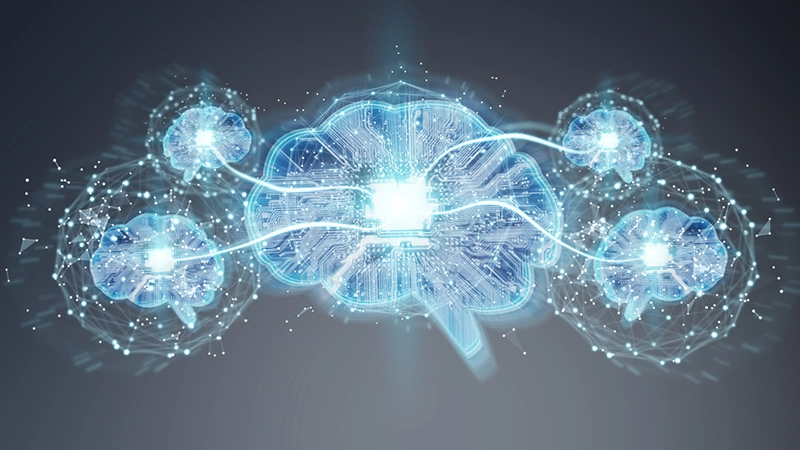AI and all the systems around it can sometimes be a confusing area. One of the groundbreaking innovations in this area is something called Retrieval-Augmented Generation (RAG). This article will take a deep dive into the essence of RAG, exploring its purpose, advantages, challenges, and future prospects. By the end of this read, you’ll gain a more and better understanding of this powerful AI technique and discover how it can be effectively utilized to enhance your technological toolkit.
Understanding Retrieval-Augmented Generation: A Comprehensive Guide
Retrieval-Augmented Generation (RAG) is a technique that enhances the capabilities of generative AI models by integrating them with external data sources. Unlike traditional language models that rely solely on pre-trained data, RAG fetches relevant information from external databases or documents to generate more accurate and contextually relevant responses.
RAG combines two main components: a retrieval mechanism and a generation model. The retrieval mechanism searches for relevant documents or data based on the user’s query, while the generation model uses this retrieved information to produce a coherent and accurate response. This integration allows RAG to provide up-to-date information and reduce the likelihood of generating incorrect or biased content.
The Critical Role of Retrieval-Augmented Generation in Modern AI
RAG plays a crucial role in modern AI applications by addressing some of the limitations of traditional language models. One of the significant advantages of RAG is its ability to provide factual grounding. By accessing curated knowledge bases, RAG ensures that the generated text is based on accurate and reliable information, making it particularly valuable for applications where factual accuracy is paramount, such as news reporting, scientific writing, and customer service.
Moreover, RAG enhances contextual relevance by retrieving information that is directly related to the user’s query. This contextual grounding helps in generating responses that are more coherent and aligned with the given context, thereby improving the overall user experience.
Top 5 Benefits of Implementing Retrieval-Augmented Generation
Implementing RAG in AI applications offers several benefits:
- Improved Accuracy and Relevance: RAG provides access to up-to-date information, ensuring that the generated content is accurate and relevant to the user’s query.
- Enhanced User Interaction: By providing personalized and context-aware responses, RAG improves user satisfaction and engagement.
- Reduced Biases: RAG mitigates biases by retrieving information from diverse data sources, ensuring a more balanced and fair output.
- Scalability and Efficiency: RAG can handle large datasets and optimize performance, making it suitable for various applications.
- Cost-Effectiveness: RAG allows for the integration of new data sources without the need for retraining the entire model, saving time and resources.
A Step-by-Step Guide to How Retrieval-Augmented Generation Operates
Gaining a comprehensive understanding of how RAG (Recurrent Attention Generative) models operate requires delving into several crucial steps. These steps encompass a range of intricate processes and concepts that collectively contribute to the functionality and effectiveness of RAG models. By meticulously exploring each of these steps, one can develop a thorough grasp of the underlying mechanisms and principles that drive RAG models, thereby enhancing their ability to leverage this advanced technology in practical applications. Let’s take a look at them:
- Data Collection and Preparation: Identify and gather relevant data sources, ensuring data quality and diversity.
- Model Training and Fine-Tuning: Train the retrieval model to fetch relevant documents and fine-tune the generation model to integrate this information effectively.
- Real-Time Retrieval and Generation: Process user queries, retrieve relevant information, and generate accurate responses in real-time.
- Scalability and Performance Optimization: Ensure the system can handle large datasets and optimize retrieval speed for efficient performance.
- Ethical and Bias Considerations: Implement strategies to ensure fairness and mitigate biases in the generated content.
Retrieval-Augmented Generation vs. Semantic Search: Key Differences Explained
While both RAG and semantic search aim to improve the relevance and accuracy of information retrieval, they differ in their approaches. Semantic search focuses on understanding the meaning behind the user’s query to retrieve relevant documents. In contrast, RAG goes a step further by integrating the retrieved information with a generative model to produce a coherent and contextually relevant response.
RAG’s ability to generate responses based on retrieved information makes it more suitable for applications requiring detailed and context-aware answers, such as customer support and educational tools. On the other hand, semantic search is often used for retrieving documents or data without generating new content.
Leveraging AWS for Your Retrieval-Augmented Generation Needs
Amazon Web Services (AWS) offers a robust platform for implementing RAG. AWS provides various tools and services, such as Amazon SageMaker, which can be used to develop, train, and deploy RAG models. By leveraging AWS, businesses can efficiently manage their data, perform real-time retrieval, and generate accurate responses, all while ensuring scalability and security.
For instance, AWS’s vector databases can store documents as vectors in a high-dimensional space, allowing for fast and accurate retrieval based on semantic similarity. This capability is crucial for RAG systems that rely on retrieving contextually relevant information to generate accurate responses.
Future-Proofing with AWS: Next Steps for Retrieval-Augmented Generation
To future-proof your RAG implementation, consider integrating it with other emerging technologies such as IoT and edge computing. This integration can enable real-time, context-aware applications that provide immediate and relevant responses based on the latest data.
Additionally, staying updated with advances in retrieval algorithms and exploring cross-language retrieval and generation can further enhance the capabilities of your RAG system. By continuously improving and adapting your RAG implementation, you can ensure it remains effective and relevant in the ever-evolving AI landscape.
Why Choose Retrieval-Augmented Generation? Key Advantages Unveiled
Choosing RAG over traditional AI models offers several key advantages:
- Factual Consistency: RAG ensures that the generated content is grounded in factual information, reducing the likelihood of inaccuracies.
- Contextual Relevance: By retrieving information relevant to the user’s query, RAG generates responses that are more coherent and contextually appropriate.
- Flexibility and Adaptability: RAG can easily integrate new data sources, making it adaptable to changing information and requirements.
- Enhanced User Experience: RAG provides personalized and context-aware responses, improving user satisfaction and engagement.
Exploring Google Cloud’s Suite of Products & Services for RAG
Google Cloud offers a comprehensive suite of products and services that can be leveraged for RAG implementation. Google Cloud’s AI and machine learning tools, such as TensorFlow and Vertex AI, provide robust platforms for developing and deploying RAG models.
Additionally, Google Cloud’s vector databases and data management services enable efficient retrieval and storage of relevant information, ensuring that your RAG system can access and utilize the latest data to generate accurate responses. By leveraging Google Cloud’s capabilities, businesses can enhance their RAG implementation and achieve better results.
Frequently Asked Questions About RAG
To provide a comprehensive understanding of RAG, here are some frequently asked questions:
What is retrieval-augmented generation and why is it important?
Retrieval-Augmented Generation (RAG) is a technique that enhances the capabilities of generative AI models by integrating them with external data sources. This integration allows RAG to provide more accurate and contextually relevant responses, making it important for applications where factual accuracy and contextual relevance are crucial.
How does RAG differ from traditional AI models?
Traditional AI models rely solely on pre-trained data, which can become outdated or biased. In contrast, RAG integrates external data sources, allowing it to provide up-to-date and accurate information. This makes RAG more suitable for applications requiring detailed and context-aware responses.
What are the primary use cases for RAG?
RAG is used in various industries, including healthcare, finance, customer service, and education. For example, in healthcare, RAG can assist in medical diagnosis and personalized treatment plans. In finance, it can help with fraud detection and investment recommendations. In customer service, RAG can enhance automated support systems and provide personalized interactions. In education, RAG can power adaptive learning platforms and intelligent tutoring systems.
How can RAG improve AI-generated content?
RAG improves AI-generated content by providing access to up-to-date and relevant information, ensuring accuracy and reducing biases. By retrieving information from diverse data sources, RAG generates more balanced and fair content, enhancing the overall quality of AI-generated responses.
What are the challenges in implementing RAG?
Implementing RAG involves several challenges, including ensuring data quality and diversity, managing model complexity and scalability, and addressing ethical and bias concerns. Overcoming these challenges requires careful planning, continuous monitoring, and the implementation of strategies to ensure fairness and mitigate biases.
Conclusion
Retrieval-Augmented Generation (RAG) represents a significant advancement in the field of AI, offering enhanced accuracy, relevance, and user satisfaction. By integrating external data sources, RAG addresses the limitations of traditional AI models and provides more contextually relevant and accurate responses. As AI continues to evolve, RAG will play an increasingly important role in various industries, from healthcare and finance to customer service and education.
To stay ahead in the AI landscape, consider implementing RAG in your projects and leveraging platforms like AWS and Google Cloud to enhance your capabilities. By understanding the benefits, challenges, and future potential of RAG, you can make informed decisions and achieve better results in your AI applications.



